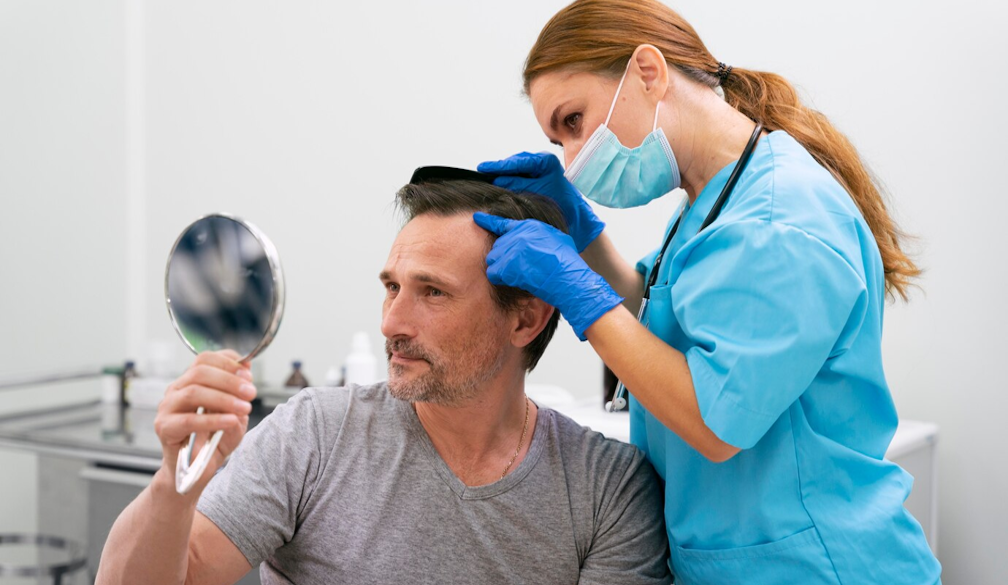Vaginal mesh controversy shows collective failure of the TGA and Australia's specialists
- Written by Christopher Maher, Associate Professor, Urogynaecology Royal Brisbane and Women's and Wesley Hospitals Brisbane, The University of Queensland
 Hundreds of women have complained of adverse reactions from transvaginal mesh implants.Anna Noack/Unsplash
Hundreds of women have complained of adverse reactions from transvaginal mesh implants.Anna Noack/UnsplashAustralian women are coming forward with stories of the negative impacts on their lives of transvaginal mesh implants, medical devices surgically inserted to prevent pelvic organ prolapse.
A recent Australian consumer group survey reported more than 700 women said they had a mesh implant that had caused adverse effects. These included incontinence, severe chronic pain, problems walking, painful intercourse and even marriage breakdown. In the United Kingdom, hundreds of women are taking legal action against the National Health Service and the makers of mesh implants.
The Senate is conducting an inquiry into transvaginal mesh implants in Australia. The questions the inquiry aims to answer include why there is no accurate record of how many meshes have been inserted in Australia, and how we can guarantee safer introduction of new products in future.
So, how did we get to a place where hundreds of Australian women have allegedly had this surgery leading to lifelong complications?
A history of transvaginal mesh
The pelvic floor is a group of muscles in the pelvic area that support the bladder, vagina and rectum. About 50% of women who have had children experience pelvic floor dysfunction. As many as 20% will require surgery for these conditions.
Pelvic floor dysfunction includes prolapse (falling through) of pelvic organs, such as the bladder, bowel or uterus (womb), through the vagina. It also includes stress urinary incontinence, which is involuntary urine leakage with activity such as sport, coughing or even walking.
The surgery and the medical devices used differ between these two conditions.
Stress incontinence
In the late 1990s, an innovative treatment for stress incontinence was introduced. This involved a permanent synthetic sling, called a mid-urethral sling, placed under the urethra (the tube through which urine travels from the bladder) to give it support.
 The mid-urethral sling is placed under the urethra for support.from shutterstock.com
The mid-urethral sling is placed under the urethra for support.from shutterstock.comBy 2002, the mid-urethral sling became the most frequently performed incontinence surgery in Australia. This was because doctors saw the procedure was equivalent to, or better than, alternative procedures. The blood loss and operating time were less and recovery times were shorter than older procedures.
This clinical experience was later confirmed in large trials. But while we waited for the results of these, which were published from 2004 onward, many women gained from a highly effective and safe operation, demonstrating the benefits of the innovation.
Pelvic organ prolapse
Traditional surgery for pelvic organ prolapse involved repairing the torn connective tissue with sutures. This was called vaginal repair. Unfortunately, this surgery was associated with a high rate of the prolapse recurring.
Following the success of the sling tape in stress incontinence, and of mesh use for hernias, doctors and manufactures looked to introduce a mesh product to treat vaginal prolapse. This involved sheets of mesh being placed under the bladder, or in front of the bowel, to stop prolapse and prevent recurrence.
The Therapeutic Goods Association (TGA) approved a variety of transvaginal mesh kits for pelvic organ prolapse from 2003. As with the mid-urethral sling four years earlier, little supporting data on the safety and efficacy of these kits was initially available.
Due to a lack of detail in the Medicare codes used to record the surgeries, we are unable to accurately determine how many women underwent surgery. I estimate that around 150,000 tapes for stress urinary incontinence and between 30,000 and 40,000 transvaginal meshes for pelvic organ prolapse have been performed to date.
Problems with vaginal mesh
Since the introduction of transvaginal mesh, long-term trials and reviews have demonstrated it has some advantages over traditional vaginal repair. These include reduced symptoms of prolapse and need to operate again. But the mesh kits also have disadvantages.
The mesh rubs or becomes exposed in the vagina in as many as 14% of cases. For some women, the exposure has no symptoms, but others experience bleeding, discomfort and painful intercourse.
At least half of the women in the studies reviewed needed surgery to treat the exposed mesh and sew over the vaginal tissue. The surgical correction is relatively straightforward and is generally successful.
Another problem is vaginal and groin pain, which affects 3-4% of women. Sometimes multiple surgeries are required to remove large portions of the mesh. The pain persists in as many as 25% of women, even after mesh excision, and may become chronic and disabling. Some find it difficult to maintain employment and intimate relationships.
What regulatory bodies did
Following reports of these complications, the US Food and Drug Administration (FDA) issued alerts in 2008 and 2011 that the mesh carried serious risks. Many transvaginal mesh kits were voluntarily removed from the market. Most doctors in Australia stopped using the mesh for prolapse from 2012.
While the evidence of the benefits of the mid-urethral sling for urinary incontinence is overwhelming, some changes to the tapes were introduced from 2005 to decrease adverse events. The TGA approved these new mini-slings (or obturator slings) and specialists used these without evidence confirming whether they were safer or more effective than the traditional mid-urethral sling.
 Disabling vaginal and groin pain can be a complication of vaginal mesh implants.from shutterstock.com
Disabling vaginal and groin pain can be a complication of vaginal mesh implants.from shutterstock.comIn 2015, an extensive Cochrane review showed 2-3% of women developed significant groin pain after surgery with the obturator slings. It also showed the obturator slings were not as effective as the traditional slings at the five-year mark. But the obturator slings were quicker to perform and had less bladder injury than the traditional mid-urethtral slings.
In 2016, specialist groups such as the Urogynaecology Society of Australia and the Australian College of Obstetricians and Gynaecologists undertook educational courses and later issued statements cautioning doctors about using the new slings.
Many of the affected women have asked how procedures could be performed on them when the full benefit-to-risk profile of the intervention was not yet known. It can be argued doctors wanted to provide new and better options. But, in hindsight, innovation and patient safety could have been far more closely aligned.
This could have been achieved if both the TGA and the specialists themselves had more thoroughly evaluated transvaginal meshes by ensuring these were used under the oversight of medical ethics committees. The well-established practice of performing large trials under the guidance of an ethics committee encourages innovation while ensuring patients are properly informed of the possible benefits and risks of the innovation.
While some Australian hospitals took this precautionary step, the fact it did not happen uniformly is a collective failure of both the TGA and specialists.
Next steps
The Senate review will evaluate how sponsoring manufacturers interact with doctors performing surgical interventions, and how the broader medical community and public are educated about new interventions.
It is hoped the inquiry will inform the general community, doctors and industry of a clear and transparent pathway that balances the need for innovation and the responsibility for protecting patients.
Finally, while waiting on the inquiry’s deliberations, women should remain confident mid-urethral slings used for stress incontinence are an excellent intervention. Those undergoing prolapse surgery should also be reassured that highly trained specialists will carefully evaluate and perform surgery without the need for transvaginal mesh.
Those affected by ongoing complications associated with transvaginal mesh can be reassured Australian specialists are leaders in the management of these problems. Not only were we among the first in the world to report large trials that evaluated transvaginal mesh, we’ve also reported on the safety, technique and efficacy of mesh-removal procedures for vaginal pain in peer-reviewed publications.
We are fully supportive of the women who have experienced complications of transvaginal mesh. We look forward to working collaboratively at a national and local level, under the auspices of the Senate enquiry, to ensure we learn from the mistakes made when introducing transvaginal mesh into clinical practice.
Further information is available on the websites of the College of Obstetricians and Gynaecology (RANZCOG) and the Urogynaecology Society of Australia (UGSA).
Christopher Maher does not work for, consult, own shares in or receive funding from any company or organisation that would benefit from this article, and has disclosed no relevant affiliations beyond the academic appointment above.
Authors: Christopher Maher, Associate Professor, Urogynaecology Royal Brisbane and Women's and Wesley Hospitals Brisbane, The University of Queensland





